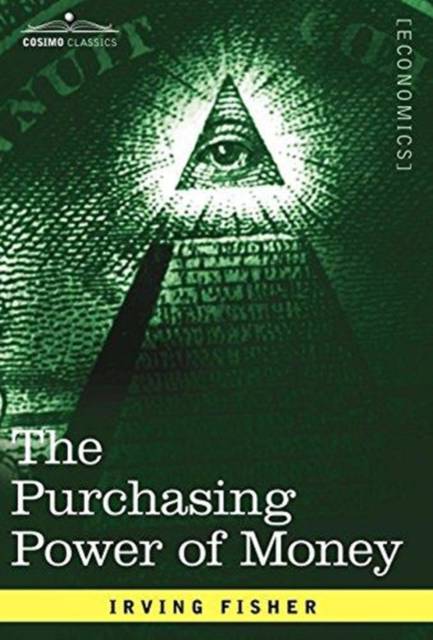
Door een staking bij bpost kan je online bestelling op dit moment iets langer onderweg zijn dan voorzien. Dringend iets nodig? Onze winkels ontvangen jou met open armen!
- Afhalen na 1 uur in een winkel met voorraad
- Gratis thuislevering in België vanaf € 30
- Ruim aanbod met 7 miljoen producten
Door een staking bij bpost kan je online bestelling op dit moment iets langer onderweg zijn dan voorzien. Dringend iets nodig? Onze winkels ontvangen jou met open armen!
- Afhalen na 1 uur in een winkel met voorraad
- Gratis thuislevering in België vanaf € 30
- Ruim aanbod met 7 miljoen producten
Zoeken
The Purchasing Power of Money
Its Determination and Relation to Credit Interest and Crises
Irving Fisher
€ 58,45
+ 116 punten
Uitvoering
Omschrijving
Perhaps America's first celebrated economist, Irving Fisher-for whom the Fisher equation, the Fisher hypothesis, and the Fisher separation theorem are named-staked an early claim to fame with his revival, in this 1912 book, of the "quantity theory of money." An important work of 20th-century economics, this work explores: - the circulation of money against goods - the various circulating media - the mystery of circulating credit - how a rise in prices generates a further rise - influence of foreign trade on the quantity of money - the problem of monetary reform - and much more. American economist IRVING FISHER (1867-1947) was professor of political economy at Yale University. Among his many books are Mathematical Investigations in the Theory of Value and Prices (1892), The Rate of Interest (1907), Why Is the Dollar Shrinking? A Study in the High Cost of Living (1914), and Booms and Depressions (1932).
Specificaties
Betrokkenen
- Auteur(s):
- Uitgeverij:
Inhoud
- Aantal bladzijden:
- 528
- Taal:
- Engels
- Reeks:
Eigenschappen
- Productcode (EAN):
- 9781602069572
- Verschijningsdatum:
- 1/11/2007
- Uitvoering:
- Hardcover
- Formaat:
- Genaaid
- Afmetingen:
- 140 mm x 216 mm
- Gewicht:
- 802 g

Alleen bij Standaard Boekhandel
+ 116 punten op je klantenkaart van Standaard Boekhandel
Beoordelingen
We publiceren alleen reviews die voldoen aan de voorwaarden voor reviews. Bekijk onze voorwaarden voor reviews.











